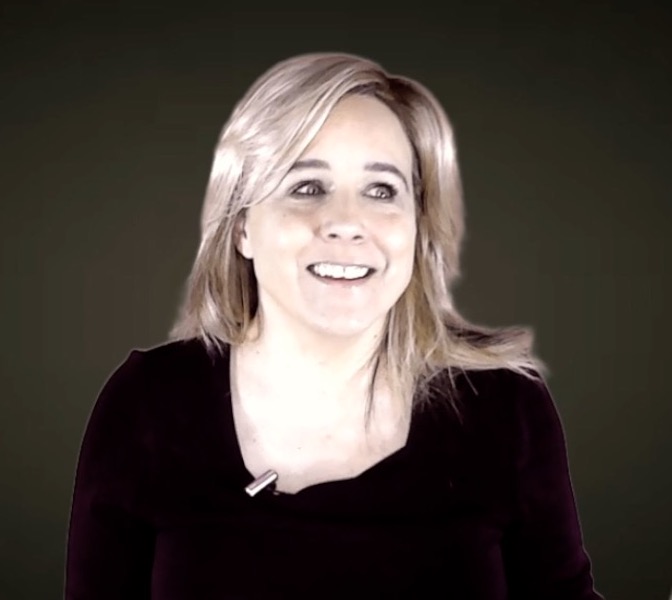Fake News?
The Illusion of Reality
Every culture lives within its dream. – Lewis Mumford (1934)
The general perception of physical reality, at any given time or place, is defined by three factors; the level of scientific knowledge available to the ‘public’, obedience to an elite who control that perception of reality, and faith in what is known, but unseen. Growing knowledge and more importantly growing faith expands our understanding of reality while obedience to a controlling authority diminishes and distorts the true understanding of reality.
The science-based knowledge we have today of the physical world was not attained without great struggle. Those who challenged the controlled static beliefs in order to expand understanding of physical reality met with profound obstacles. The individuals throughout history who revolutionized scientific thinking, with their courageous concept of the greater reality did so, often at their peril.
One of the most remarkable of these thinkers was the inspired Nicholas of Cusa whose understanding combined both physical and spiritual aspects of reality. He challenged, at a most profound level, those who believe their perception of the world was the only and correct truth.
Alfred Crosby described Cusa’s view of the universe as containing everything, except God, who contained it. Such a universe had no limit, no edge, space was homogeneous. Nicholas of Cusa, lived in a society in which rigorous qualitative analysis, the intellectual tool of choice of Aristotle seemed to be losing its edge and searching for new tools. He found a new tool in quantification. He wrote, “Think of precision, for God is absolute precision itself,” and “Mind is a living measure which achieves its own capacity by measuring other things.”(1)
Gradually, the beliefs of revolutionary thinkers like Copernicus, Galileo, and Cusa were accepted as scientifically valid, but the battle to have the ‘establishment’ allow for greater knowledge and higher truths remains today. The major contribution each of these men made, and many others, was due to their ability to advance measurement. Their advances impacted the Western perspective of reality and, eventually were accepted as the ultimate truth. The question remains, can we define absolute truth by mathematical measurement? Some believe we can. Alfred Crosby sees knowledge as follows, “I often say that when you can measure what you are speaking about and express it in numbers you know something about it; but when you cannot measure it, when you cannot express it in numbers, your knowledge is of a meagre and unsatisfactory kind.”(2)
History, obviously, has proven that reality based on measures are not static, but merely a transitory interpretation of reality. However, in the West, scientific measurement has defined the direction in which our society has proceeded. It defines many aspects of our lives including our understanding of time, distance, architecture, communications, transportation and most profoundly, money. All of these forms of measurement, most particularly money, have had profound effects on the behaviour and beliefs of humanity.
Also, within the Western world view, a multiplicity of realities are dependent on a personal, tribal, societal perspectives based on color of ones skin, gender, geographic location, economic status and to the degree one is educated and the nature of that education. At present, the state of our personal circumstances shape our reality is truly a great understatement. In other words, there is not one reality but many perceived, simultaneous realities in our society and our world. Our perceptions of reality are the basis on which we interact in our humanity, including how we think and live and love.
Reality, in terms of our approach to health and medicine, has taken very divergent routes in the West and in the East over the last several thousand years. In the last few hundred years European thinking evolved around the concepts of reason, judgment and consequently, the human body is viewed on this same basis. In the early Renaissance, surgeons explored, not the whole living being, but cadavers, as though they were mechanical devices. Eastern understanding of medicine is largely based on the intuition of the practitioner and his/her high degree of sensitivity to the expressiveness of the patient’s body. In the East, the language of the body itself shaped the approach medical treatment. For example, the sense of touch can tell a Chinese doctor much information. When testing the pulse, for instance, they feel for changes and degree of changes in slightly different locations. They are able to feel twelve levels of pulse and how that affects different organs and systems of the body. The health issues are diagnosed by the level of sensitivity of the practitioner. This level of measure does not exist with Western practitioners who must rely on measurement devices.
The central question in Eastern medicine is what is happening within the patient’s body and why. The question of why is not often asked in Western medicine. These two realities create very different health care systems. The one is intended to aid the body to heal, the other is to intervene from the outside often with surgeries and administering synthetic drugs to minimize symptoms. These symptoms are the body talking. Symptoms are the body’s way of dialoguing that aboriginal and Eastern medical practitioners use to help create wellness. They use all of their physical senses in the process. Shigehisa Kuriyama explains, “Each sense has objects that are proper to it, which define its role in diagnosis. The fingers, for instance, feel the texture of the skin, the warmth and consistency of the flesh, the flow of the mo. The nose smells the patient’s body and excretions The ears hear voice pitch, groans, reports of pain and malaise, As for the eyes, they observe many things-physical gait, posture, edemas, skin eruptions.(3)
As we look back from the 1960s onward we have seen much information that reminds us that we are physiologically and psychologically the products of what we feel, see, hear and ingest. As a result of our expanding awareness we are again becoming more sensitive to the expressions of our bodies. Many people in the West are now consciously choosing to take better care of their own body. We are expanding our beliefs about medical treatment. We are now seeing the grip of allopathic being loosened and the efficacy of ‘alternative’ medicines being demonstrated. This is, of course, not without a fight from the corporate medical establishment, most militantly since 2020.
Medicine and concerns for the physical body are not the only examples of how European culture, over the course of several hundred years, have developed a very different value system from those, mainly aboriginal societies, who have maintain their spiritual truth, Cultures of European origin viewed most aspects of their reality from an external perspective, causing them to become disconnected from their internal spiritual reality.
We are approaching our next fundamental shift in our interpretation of reality, taking us back to our spiritual roots as another and more powerful reality emerges. For example, we are now seeing that scientifically measured power of thought and intent can result in physical changes in our world. Dr. Masaro Emoto, and many other courageous scientists are turning fantasy and reality topsy-turvy. What was thought to be reality is now seen as illusion and vice versa.
Dr. Emoto explains, “If you don’t understand the principles of the spirit of words, this happening will indeed seem strange, but we know that this spirit of words has the power to influence all of existence and change the world almost immediately. I have no doubt that the spirit of words generated from the determined prayers for world peace had the affect of cleaning the water in the lake in only a matter of moments.”(4)
The transition to a new truth is a slight perception of reality away. A gesture, a few truthful words can change an entire perspective. However, until we acknowledge God and the power beyond our own primitive Western view of humanity, the truth is reluctant to reveal itself.
The powers that lie within spirituality are uncontrollable by those who attempt to control humanity through religion and politics. The rituals that aboriginal cultures practice engage these spiritual powers for the good of their people. Through these rituals they gain guidance and assistance from the spiritual world in all aspects of life. It may be time for all of us to view reality from a renewed perspective.
Endnotes
- Crosby, Alfred W. (1997). The Measure of Reality Quantification and Western Society, 1250-1600. (p.101) New York, Cambridge Press.
- Ibid. (p.225).
- Kuriyama, Shiehisa. (1999). The Expressiveness of the Body and the Divergence of Greek and Chinese Medicine. (p167). New York, Zone Books.
- Emoto, Masaro. (2004). The Hidden Messages in Water. (p.44). Hillsboro, Oregon, Beyond Words Publishing Inc.






